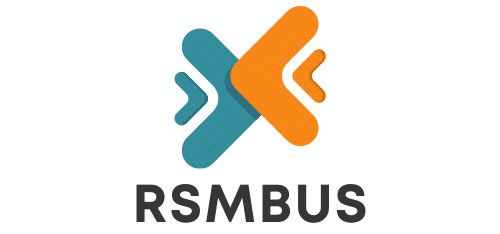Master’s level swimming is a world of its own, a domain where aspiring athletes come to prove their mettle, hone their skills, and push their boundaries. Coaching these swimmers is a privilege that comes with great responsibility. It requires a deep understanding of the sport, a keen eye for details, and an unwavering commitment to helping each swimmer reach their highest potential. If you are a coach faced with the task of designing a personalized training program for master’s level swimmers, this guide is for you. We will delve deep into the nuances of creating a program that caters to the unique needs, goals, and capacities of each swimmer.
Understanding the Swimmer
Before you start designing a workout, it is crucial to understand the swimmer. Knowing their strengths and weaknesses, their personal goals, and their current fitness level is key. This understanding will guide your decisions about the kind of training they need and the pace at which they should progress.
A lire aussi : Can Prehabilitation Exercises Reduce Injury Risk in Professional Dancers?
A swimmer’s goals could range from improving their freestyle speed to building endurance for long-distance events. Their current fitness levels may differ, too. Some may be returning to the pool after a hiatus, while others might be regular swimmers looking to boost their performance.
Developing a Training Schedule
A well-rounded training program isn’t just about spending hours in the water. It encompasses a balanced mix of swimming workouts, dryland strength training, and adequate rest periods.
A lire aussi : What’s the Role of Altitude Masks in Preparing Boxers for High-Altitude Fights?
When constructing the swim workouts, consider the swimmer’s primary stroke. If they’re a freestyle swimmer, incorporate training sets that enhance their speed, efficiency, and stroke technique. Also, include workouts for other strokes to ensure overall development and prevent muscle imbalances.
Strength training is an integral part of a swimmer’s workout. It helps build the power and endurance necessary for optimal performance in the pool. Workouts should be tailored to target the muscle groups most used in swimming – the shoulders, back, core, and legs.
Rest is equally important. It allows the body time to repair and strengthen itself between workouts. Without adequate rest, swimmers run the risk of overtraining, which could lead to injuries and hinder performance.
Monitoring Progress and Adjusting the Program
No training program is set in stone. As a coach, you need to monitor your swimmer’s progress closely. This can be done through regular time trials, fitness tests, and observations during training sessions.
If a swimmer is not meeting their performance goals or struggling with certain workouts, it might be time to reevaluate the training program. Adjustments might include changing the workout intensity, introducing new training sets, or increasing rest periods.
Creating a Supportive Environment
The physical aspect of training is just one part of the equation. A significant part of a swimmer’s success hinges on their mental strength and the environment they train in. As a coach, you have a role in creating a supportive, encouraging environment that fosters their growth.
This includes fostering a team spirit among your swimmers, providing constructive feedback, and helping them manage the pressures of competitive swimming. Remember, a motivated, confident swimmer is a successful swimmer.
Staying Informed and Up-to-Date
The field of sports training is dynamic and constantly evolving. New research, techniques, and training tools are continually being developed. As a coach, staying informed and up-to-date with these advancements will help you design effective training programs.
This might involve attending coaching seminars, reading sports science research, or exchanging ideas with other coaches. The more knowledge you have, the better equipped you will be to guide your swimmers towards their goals.
In conclusion, designing a personalized training program for a master’s level swimmer is a complex process that demands a deep understanding of the swimmer, a comprehensive approach to training, a constant monitoring and adjustment of the program, a supportive environment, and a commitment to continuous learning. As a coach, your role is instrumental in helping your swimmers unlock their potential and achieve their goals.
Remember, every swimmer is unique, and the most effective training program is one that caters to their individual needs, abilities, and ambitions.
Incorporating Equipment in Training
Incorporating equipment in a swim workout is a fantastic way to add variety and challenge to the swimmer’s training. This can help to intensify the workout, focus on a specific area, or modify the exercise to suit the swimmer’s abilities.
Two common pieces of equipment used in swim training are the pull buoy and kick board. The pull buoy, typically held between the thighs, isolates the upper body, allowing the swimmer to focus on pulling strength and arm stroke efficiency. In contrast, the kick board targets the lower body, encouraging swimmers to work on their kick strength and technique.
Interval sets are also a crucial part of the training program. An interval set might consist of 8×100 freestyle swims with 20 seconds rest between each 100. The seconds rest can be adjusted based on the swimmer’s fitness level or the intended intensity of the workout.
Remember, the goal is not to make the swimmer tired but to improve their strength, power, and efficiency in the water. Therefore, ensure the equipment and interval sets used align with the swimmer’s objectives and current abilities.
Technique Training
Technique training is a core component of swim workouts. A swimmer could have the strength and endurance of a seasoned athlete, but without proper technique, they will struggle to achieve their best time and reduce their risk of injury.
Every stroke in swimming has a starting position and a series of movements that need to be executed with precision. Whether it’s freestyle, backstroke, breaststroke, or butterfly – each stroke requires a unique set of skills. This includes body alignment, kick patterns, the timing of breaths, and the coordination of arm and leg movements.
As a coach, it’s essential to dedicate time in each swim lesson to work on technique. This could involve breaking down each stroke into smaller parts, demonstrating the correct form, and providing feedback as the swimmer practices.
For example, in a freestyle lesson, you might start with the arm stroke – demonstrating the high elbow catch, the push through, and the recovery phase. The swimmer can then practice this using a pull buoy or with easy freestyle swimming.
The key here is repetition and consistency. It takes time and practice for the correct technique to become second nature. Be patient, provide positive reinforcement, and celebrate small improvements along the way.
In conclusion, designing a personalized training program for master’s level swimmers is a rewarding challenge. It requires a deep understanding of the swimmer’s abilities and goals, a comprehensive approach to training that includes swim workouts, strength training, equipment, technique work, and adequate rest.
As a coach, your role is vital in helping your swimmers unlock their potential, overcome challenges, and achieve their goals. Remember, every swimmer is unique, and the most effective training program is one that caters to their individual needs, abilities, and ambitions. Therefore, stay informed, remain flexible, and continually strive to create a supportive, encouraging environment for your swimmers. It’s not just about the time on the clock; it’s about the journey swimming takes them on.











